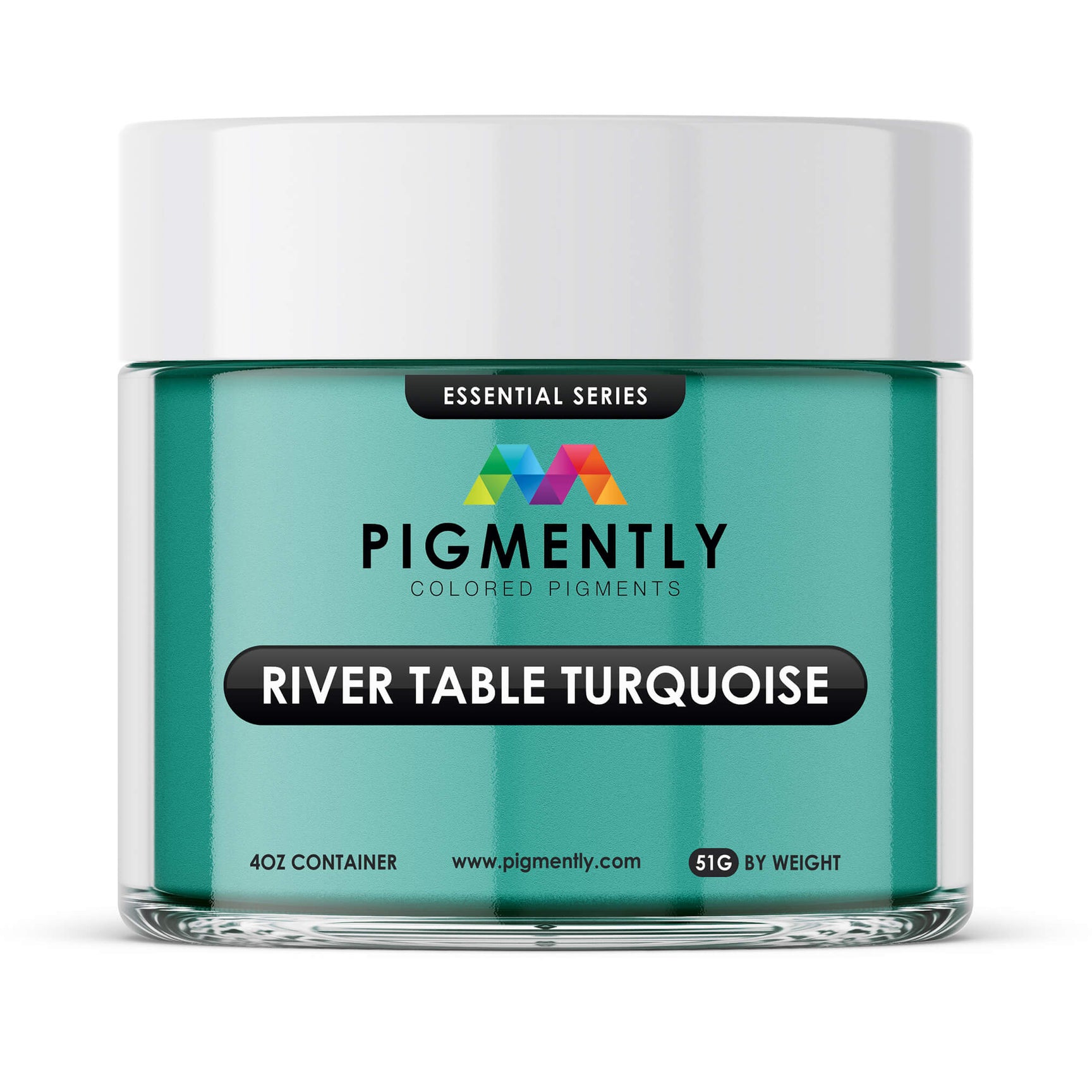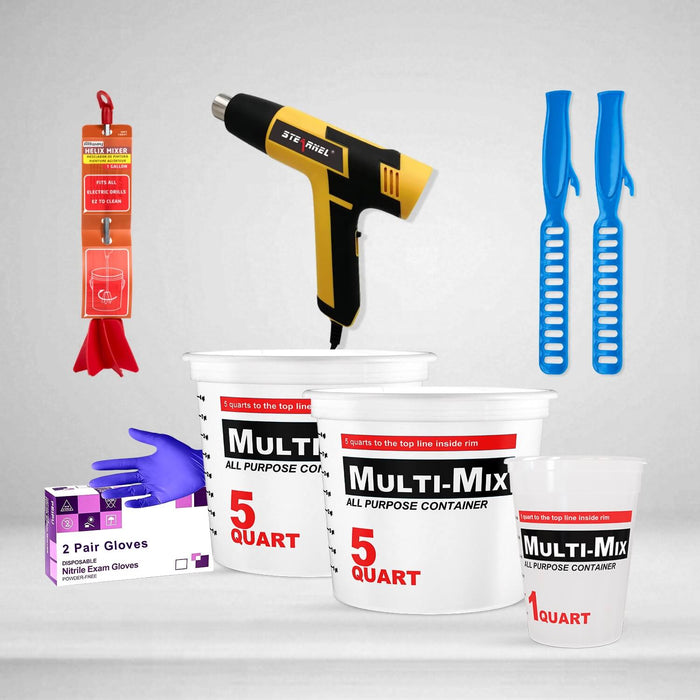Welcome to our guide to polishing larger epoxy resin projects!
[This guide is for polishing large epoxy projects. For small projects e.g., resin art/jewelry, click here.]
With the right technique and attention to detail, you can polish fully cured epoxy resin surfaces. However, polishing epoxy isn't as beginner friendly as other resin techniques.
This is because polishing with a buffer tool can generate enough heat to damage epoxy. To be successful, you'll need a sense of when to pull back to let the epoxy cool before resuming.
In this guide, we'll go over what tools and supplies you'll need for polishing, then cover the process step-by-step.
Should you sand before polishing your epoxy surface?
If your surface is slightly dull and doesn't have significant scratching, you should be able to jump straight to polishing.
However, if the epoxy surface is scratched or blemished, you will want to sand it first. Read our epoxy sanding guide for information on how to do that.

How to polish epoxy resin: A step-by-step guide
Step #1: Gather the right tools and supplies.
Start by obtaining all the necessary items for polishing:
- A variable-speed polisher: This is a handheld power tool that you can attach buffing pads to in order to polish various materials, including epoxy. There are many different brands which you can find online and in most hardware or home improvement stores.
- A medium/medium-hard smooth foam polishing pad: You'll attach this to your polisher. Most polisher manufacturers also make suitable pads for their devices. Otherwise, you can choose from many other brands as well. Make sure you choose a pad that fits your polisher type and size.
- High-gloss polishing compound: There are quite a few of these out there. Choose one designed for hard surfaces, such as 3M Finesse-it II.
- Microfiber cloth: You'll use this to wipe down your surface after each polishing pass.
Step #2: Polish your epoxy surface.
Before polishing the epoxy surface, make sure it is clean and dry. Set up the polisher and attach the foam polishing pad.
Note: When you start polishing, be sure to move smoothly and consistently. Don't linger at any spot. You'll be polishing the compound into the surface until you basically can't see it anymore.
Check the surface temperature occasionally. If it starts to get hot, stop and let it cool down before resuming. A warm surface won't cause damage, but polishers can generate a lot of heat.
- Begin by applying a small amount of polishing compound to the epoxy surface. A few dabs here and there across the entire finish should be good.
-
Starting at a low setting, begin polishing the compound into your epoxy surface, applying a little force. Spread the compound all over the epoxy.
You'll want to keep moving slowly, methodically back and forth across the surface. This will prevent heat from building up too quickly. As you work the polish into the surface and it begins to thin out, you can increase the speed a little.
Note: Check the surface occasionally to see how warm it is. If it's hot, stop and let it cool down before continuing to avoid heat damage. - Continue polishing the epoxy surface until you've done one complete pass. Afterward, use your microfiber cloth to wipe up and remaining polish residue, including on the sides where it tends to get brushed toward.
- Repeat this process for a second pass.
And that's it! If you followed the instructions, your surface should look clearer and glossier than it started.

Additional Resources
Here are some other guides and articles you may find interesting:
- UltraClear Epoxy: Materials and surface compatibility - Our page explaining which materials bond best with epoxy resin.
- Epoxy: Proper storage, shelf life, and preventing "yellowing" - Our guide to storing unopened or unused epoxy resin.
Have questions? Want advice? Contact us!
If you have any questions about epoxy resin, or if you would like assistance with planning your next epoxy project, please reach out to us—our resin experts are ready to help.
You can contact us via phone or email here. During business hours, you can also text chat online with an epoxy specialist by clicking the Help button at the bottom right of your screen.











